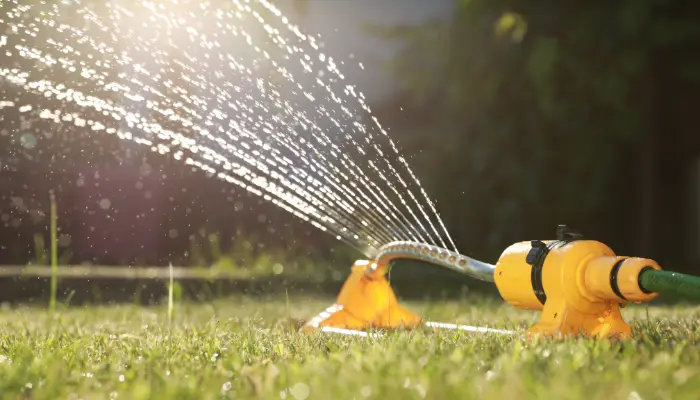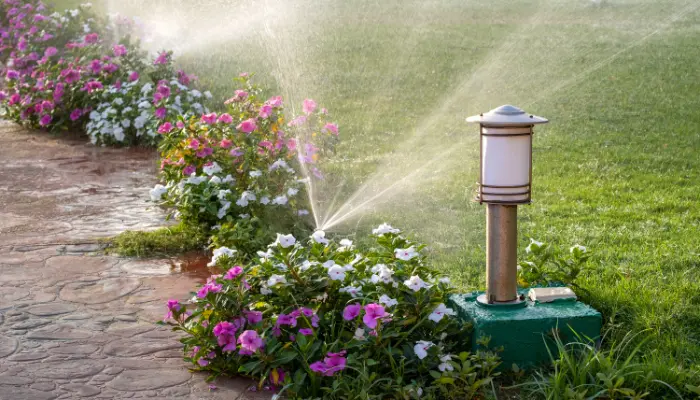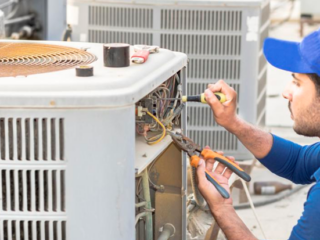Automatic watering system garden.
Imagine not having to worry about manually watering a lush, flourishing garden.
This fantasy can come true with an automatic watering system.
We will examine the world of autonomous watering systems for gardens in this thorough post, covering everything from the advantages they provide to the several varieties that are available, installation advice, and upkeep.
You’ll have all the information you need to turn your garden into a lush haven by the time this post is up.

Automatic watering system garden
The Benefits of Automatic Watering Systems
1. Water Conservation
Automatic watering systems are designed to deliver the right amount of water to your plants, minimizing waste.
They help you conserve water by avoiding overwatering or under-watering, which is not only eco-friendly but also cost-effective in the long run.
2. Time-Saving
Say goodbye to the daily chore of dragging hoses and watering cans around your garden.
Automatic watering systems do the work for you, allowing you to reclaim precious time and enjoy your garden rather than constantly tending to it.
3. Consistency
Plants thrive on consistency, and automatic watering systems provide a consistent and even distribution of water, ensuring that your garden remains healthy and vibrant.
4. Improved Plant Health
Consistent watering leads to healthier plants.
By meeting the specific water requirements of each plant, automatic systems promote optimal growth and reduce the risk of diseases caused by overwatering or underwatering.
Types of Automatic Watering Systems
There are several types of automatic watering systems to choose from, each catering to different garden sizes, layouts, and needs.
Let’s explore the most common options.
Drip Irrigation
Drip irrigation systems use a network of hoses, pipes, and emitters to deliver water directly to the base of plants.
They are highly efficient and ideal for gardens with a variety of plant types.
Soaker Hoses
Soaker hoses are porous hoses that release water evenly along their length.
They are laid on the soil’s surface or buried under mulch and provide efficient and consistent watering.
Sprinkler Systems
Sprinkler systems are versatile and suitable for both large and small gardens.
They distribute water in a spray pattern, covering a wide area. Modern sprinkler systems can be programmed for precise watering schedules.
Automatic Timers
Automatic timers can be added to various watering systems to schedule watering times and durations.
They are an essential component of most automatic watering setups, providing convenience and control.
Smart Irrigation Systems
Smart irrigation systems take automation to the next level.
They can be controlled remotely through smartphone apps, allowing you to adjust watering settings on the go.
These systems often include weather sensors to adapt watering schedules based on local conditions.
Installing Your Automatic Watering System


Now that you have an idea of the types of automatic watering systems available, let’s delve into the installation process. Proper installation is crucial for the effectiveness of your system.
Planning Your System
Start by mapping out your garden, taking note of plant locations, water sources, and any obstacles.
Consider the specific water needs of your plants and how best to meet them.
Assembling the Components
Gather all the necessary components for your chosen watering system, including hoses, emitters, timers, connectors, and any additional accessories.
Installing Drip Irrigation or Soaker Hoses
For drip irrigation or soaker hoses, lay the hoses along the desired paths, securing them with stakes or anchors.
Ensure that the hoses reach the base of each plant, and use connectors to create a network of hoses.
Setting Up Sprinkler Systems
If you opt for a sprinkler system, position the sprinkler heads strategically to cover your entire garden area.
Use connectors and pipes to create a water supply network, and ensure the system is level to prevent uneven watering.
Programming Timers and Smart Systems
If your system includes timers or smart technology, follow the manufacturer’s instructions to set up watering schedules, zones, and any other desired settings.
Testing and Adjusting
After installation, run a test cycle to ensure everything is working correctly. Check for any leaks, uneven watering, or areas that may need adjustments.
Maintenance and Troubleshooting
To keep your automatic watering system running smoothly, regular maintenance is essential. Additionally, knowing how to troubleshoot common issues can save you time and frustration.
Regular Maintenance
- Clean filters and emitters to prevent clogs.
- Inspect hoses and pipes for wear and tear, replacing damaged components.
- Check for leaks and repair them promptly.
- Replace batteries in timers or smart controllers as needed.
- Adjust watering schedules seasonally to accommodate changing weather conditions.
Troubleshooting Common Issues
- If some plants receive too much water, consider adding flow regulators or adjusting the flow rate.
- If certain areas are not getting enough water, check for clogs, obstructions, or pressure issues.
- Be mindful of pests that may chew or damage hoses and pipes; install protective covers if needed.
- Monitor weather forecasts and adjust your watering schedule accordingly to avoid overwatering during rainy periods.
Tips for Maximizing the Benefits
To make the most of your automatic watering system, consider implementing these tips:
Mulch Your Garden
Applying a layer of mulch around your plants helps retain moisture, reducing the frequency and duration of watering sessions.
Group Plants by Watering Needs
Organize your garden so that plants with similar water requirements are grouped together. This allows you to fine-tune your watering schedule and avoid overwatering some plants while underwatering others.
Monitor Soil Moisture
Invest in soil moisture sensors to gauge the actual moisture levels in your garden. This data can help you make informed decisions about when and how much to water.
Regularly Inspect Your System
Perform routine inspections of your watering system to catch any issues early and ensure it continues to function efficiently.
Wrapping Up
Automated watering systems provide a practical and effective solution to maintain a flourishing garden while saving water, your time, and your labor.
You may profit from a lush, healthy garden all year long by picking the best system, installing it correctly, and keeping up with upkeep.
Why then wait?
Now is the time to take the plunge and automate your garden!



